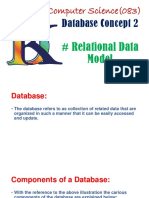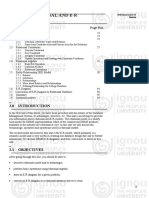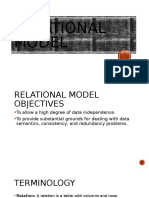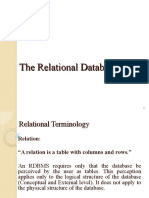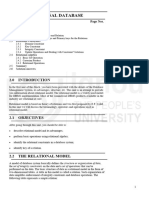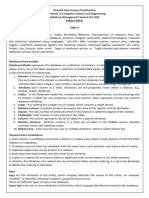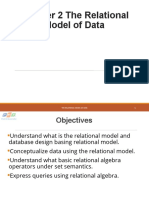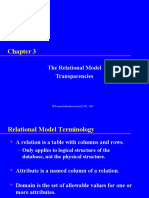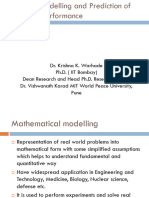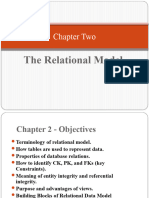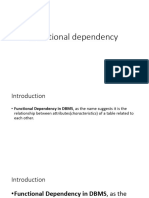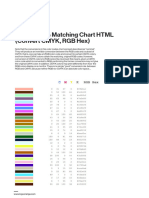0% found this document useful (0 votes)
4 views17 pagesRelational Data Model - Student
A relational database organizes data into tables with rows (records) and columns (attributes), allowing for efficient data access and modification. The relational model is based on mathematical relations, with specific terminology for its components, including keys that uniquely identify records. Properties of relations ensure data integrity and structure, while relational keys establish connections between different tables.
Uploaded by
Hihi HiCopyright
© © All Rights Reserved
We take content rights seriously. If you suspect this is your content, claim it here.
Available Formats
Download as PDF, TXT or read online on Scribd
0% found this document useful (0 votes)
4 views17 pagesRelational Data Model - Student
A relational database organizes data into tables with rows (records) and columns (attributes), allowing for efficient data access and modification. The relational model is based on mathematical relations, with specific terminology for its components, including keys that uniquely identify records. Properties of relations ensure data integrity and structure, while relational keys establish connections between different tables.
Uploaded by
Hihi HiCopyright
© © All Rights Reserved
We take content rights seriously. If you suspect this is your content, claim it here.
Available Formats
Download as PDF, TXT or read online on Scribd
/ 17












